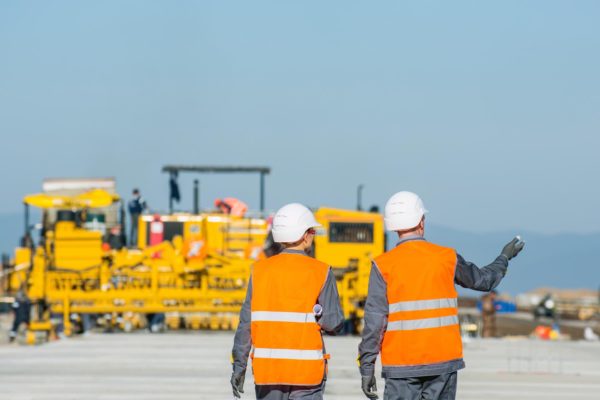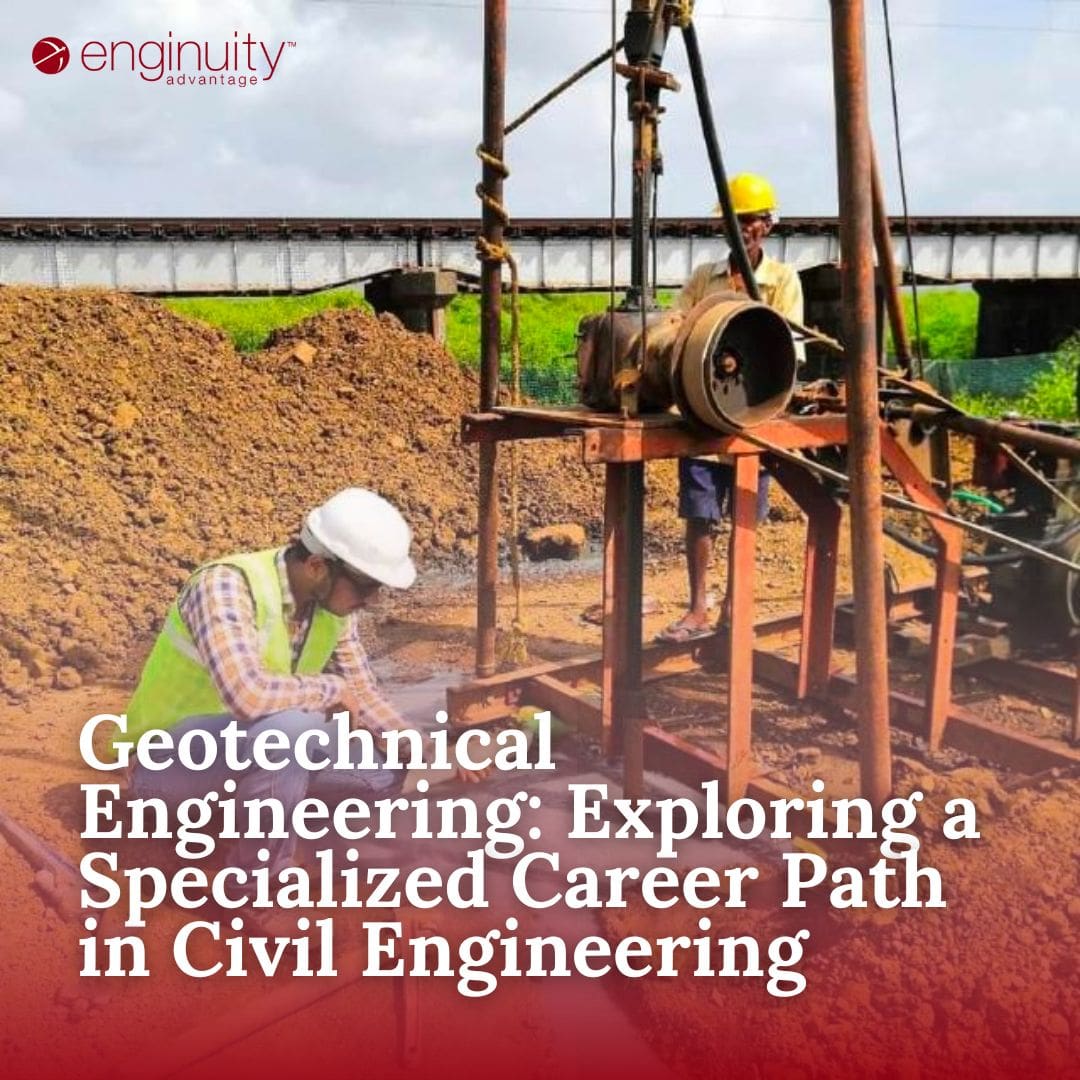Leading Geotechnical Engineers for Cutting-Edge Dirt Evaluation and Foundation Design
The Interdisciplinary Approaches in the Geotechnical Sector: Linking the Space In Between Engineering, Geology, and Environmental Scientific Research for Ideal Job End Results
The combination of design, geology, and ecological science within the geotechnical industry is not just advantageous; it is important for achieving optimal job end results. This interdisciplinary partnership cultivates a detailed understanding of facility website conditions, enabling cutting-edge solutions to arise. By checking out essential duties and effective situation studies, we can uncover the dynamic interaction that drives task success. However, difficulties continue to be in efficiently taking care of these multidisciplinary initiatives, questioning about possible innovations and future fads. What methods might emerge to promote this essential cooperation and boost the efficiency of geotechnical practices?
Relevance of Interdisciplinary Cooperation
The significance of interdisciplinary partnership in the geotechnical sector can not be overstated. Effective geotechnical tasks need the assimilation of diverse know-how from different fields, consisting of engineering, geology, and ecological science. This collaboration guarantees that all facets of a task are considered, causing thorough options that attend to complicated difficulties.
When functioning in isolation,Interdisciplinary cooperation fosters development by making it possible for professionals to share insights and methods that may not be obvious. By leveraging the toughness of several techniques, groups can recognize potential threats, optimize layout procedures, and boost the sustainability of geotechnical tasks. In addition, such collaboration advertises an alternative understanding of site-specific conditions, which is vital for precise evaluation and decision-making.
The intricacy of geotechnical projects necessitates a coordinated method to problem-solving. When engineers, rock hounds, and ecological scientists collaborate, they can develop a natural method that aligns technical requirements with environmental considerations and regulatory compliance. This synergy not just improves task results however additionally adds to the long-lasting strength of facilities. Ultimately, interdisciplinary cooperation is necessary for progressing finest practices and accomplishing excellence in the geotechnical industry.
Trick Duties of Each Technique
Collaboration among various disciplines is not simply useful; it is vital for the effective implementation of geotechnical tasks. Each discipline-- engineering, geology, and ecological science-- plays an unique yet interconnected role that adds to forecast efficiency and sustainability.
Geotechnical engineers are largely accountable for developing structures and making sure structural integrity. They assess dirt and rock residential or commercial properties to examine load-bearing capacities, offering necessary information for safe building and construction methods. Their competence makes it possible for the formula of cutting-edge options to complex obstacles.

Environmental scientists examine the potential influences of building on communities and water resources. They carry out ecological evaluations and create mitigation approaches to decrease adverse effects. By integrating eco-friendly factors to consider, they ensure compliance with regulations and promote sustainability throughout the project lifecycle.
Situation Researches of Successful Assimilation
Successful integration of geotechnical self-controls can be exemplified via numerous situation studies that highlight the efficiency of teamwork in dealing with intricate engineering challenges. One significant example is the building and construction of the Hong Kong-- Zhuhai-- Macau Bridge, where a collective approach involving geotechnical design, geology, and geo tech engineer ecological science was essential. Geologists and engineers operated in unison to evaluate the seabed problems and enhance the foundation style, making certain stability and reducing environmental influence.
An additional impactful case is the enhancement of slope security in the San Francisco Bay Location, where an interdisciplinary team integrated geotechnical analysis with ecological analyses. By integrating hydrological researches and geological surveys, the team properly identified potential landslide risks and executed reliable reduction steps, enhancing security and sustainability.
In addition, the redevelopment of Brownfield websites frequently requires a multidisciplinary method. In one situation in Chicago, collaboration amongst geotechnical engineers, environmental scientists, and metropolitan coordinators led to the effective remediation of infected soil, permitting for the risk-free improvement of the website into an area park. These study show that interdisciplinary cooperation not just addresses technical obstacles yet likewise cultivates ingenious services that profit both communities and jobs.
Obstacles in Multidisciplinary Projects

Moreover, collaborating routines and process among various teams can be problematic, particularly when each discipline has one-of-a-kind task landmarks and deliverables. This misalignment can lead to hold-ups and raised costs. The challenge of resource allocation additionally looms big; making certain that specific know-how is offered at critical times requires careful preparation and foresight.
Lastly, governing this website conformity postures one more considerable challenge. Each self-control may deal with different regulative frameworks, and aligning these needs to meet project purposes can be complex and time-consuming. Addressing these obstacles necessitates strong leadership and effective interaction approaches to foster partnership and guarantee that multidisciplinary teams function cohesively in the direction of shared objectives.
Future Trends in Geotechnical Practices
As the geotechnical market advances, arising fads are improving techniques to resolve the challenges dealt with in multidisciplinary projects - geo tech engineer. One significant fad is the enhanced integration of advanced modern technologies, such as expert system and artificial intelligence, right into geotechnical analysis and layout. These modern technologies boost predictive modeling and threat evaluation, allowing designers to make more enlightened choices throughout the task lifecycle

Moreover, the adoption of digital twins and real-time monitoring systems is becoming much more common. These tools facilitate recurring evaluation of dirt problems and structural efficiency, permitting timely treatments when problems occur.
Final Thought
In final thought, the combination of design, geology, and ecological scientific research is important for attaining optimum outcomes in the geotechnical market. Effective instance researches illustrate the advantages of this method, while recognizing the challenges encountered in multidisciplinary projects.
The assimilation of design, view it now geology, and ecological science within the geotechnical market is not merely advantageous; it is critical for achieving optimal project results. Efficient geotechnical jobs need the assimilation of varied experience from various areas, including engineering, geology, and environmental scientific research.Navigating the complexities of multidisciplinary jobs in the geotechnical market provides numerous significant challenges.As the geotechnical market develops, emerging fads are improving methods to resolve the difficulties dealt with in multidisciplinary jobs. Geotechnical engineers are significantly collaborating with environmental scientists to ensure that projects line up with sustainability objectives and comply with regulative needs.